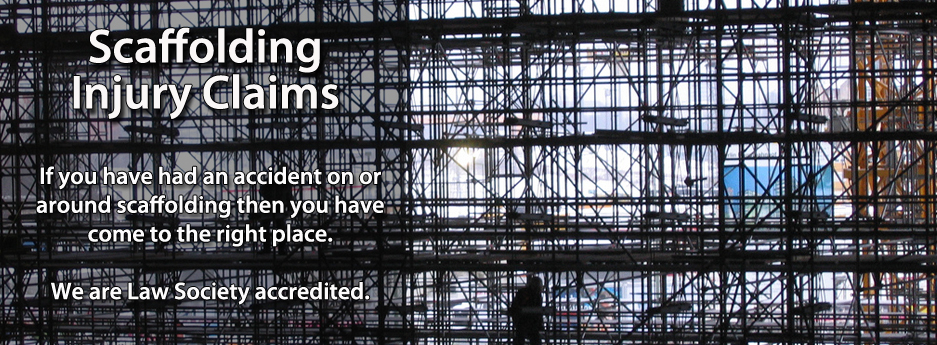Scaffolding has made the construction what it is today. Without this everyday framework of pipes and connectors, reaching heights safely for the purposes of putting up buildings would be impossible. But not all scaffolding is the same. In Hong Kong, scaffolding has been made from bamboo since the early days of its colonisation in the 1800’s due to its incredible strength; it has a greater tensile strength than steel. However, the concept of scaffolding is thought to go back for tens of thousands of years and was even used by ancient civilisations including the Egyptians.
Today scaffolding has evolved into a highly modular, standardised, composite framework of steel and aluminium tubes, combined with a set of stringent health and safety standards designed to ensure its proper use.

BS EN 12811-1 is the primary European standard which defines the performance, methods and design of scaffolding. In addition, the Health and Safety Executive (HSE) lay down very strict guidelines on the use of scaffolding to ensure that workers are kept safe from injury while using it. The Work at Height Regulations (2005) state that all scaffolding must be assembled to a recognised configuration standard, e.g. NASC Technical Guidance G2; this ensures that the scaffold is sufficiently fit for purpose and strong at each stage of use.
What makes scaffolding safe?
According to the HSE, many factors make the use of scaffolding safe:
- Safe erection and dismantling – the manufacturer, supplier or hirer of scaffolding equipment must ensure that that proper instructions are provided, making it clear the sequence in which it should be erected. Advance guardrail systems (temporary guard rails used before permanent rails are installed) or ‘Through-the-trap’ should be used as a means of ensuring the safe construction of the scaffolding. The information provided must also detail the various specification parameters of the scaffolding being used including type, maximum loads, spacing, lengths and heights.
- Stability – there are strict rules regarding what constitutes a safe base on which the scaffolding is placed and also the height, which if exceeded might make the structure unsafe.
- Precautions – All of the necessary components/features required for safety must be provided at the point of purchase or hire. These can include guardrails, toe boards, bracing and an access ladder.
- Inspection – Of primary consideration must be the thorough inspection of the scaffolding by a trained person – both following its erection, and at regular periods during its use. If any fault is detected, the use of the scaffolding must be ceased immediately until fully rectified.
- Use – The scaffolding should never be used if the weather would make it unsafe to do so, if there are missing or incorrect components, or as a support for other access equipment.
- Relocation – The rules surrounding the safe moving of scaffolding state that you must reduce the height to a safe level prior to the move, the surface should be level and safe (e.g. a pothole could cause the structure to tip over), care should be taken that there are no live power lines nearby and all pressure to move the structure should be manual and applied to the base. No one should be on the scaffolding during the move, and it should be delayed if the weather is too windy.
What should I do if I have concerns regarding scaffolding in my workplace?
Any concerns that you have must be reported directed to your employer, or company responsible for the erection of the scaffolding, who have a legal duty to investigate and address them immediately (suspending use of the structure in the meantime). If you feel that your concerns have not been taken seriously, or ignored, you should report these straightaway to the HSE; this can be done by completing their online concerns form.
Cases of unsafe scaffolding practice still occur
The national media recently reported an incident which occurred in Kensington, in which a worker in his 30’s died after falling from scaffolding at a construction site in July; this case is under investigation by the HSE. In another case in June 2013, the HSE reported a case in which officers from Ealing Council intervened when they observed ‘very unsafe practices’ during the erection of scaffolding at the site of a large hotel building site. A Prohibition Notice was served by the HSE, which was then followed by the Dangerous Structure Notice, which meant the tower had to be dismantled. Even during the dismantling process, the work was deemed to be undertaken in such an unsafe manner (immediately over a street of shoppers), that a member of the public asked the police to attend. Both the constructors and scaffolding contractors were fined £18,000 respectively.
Can I claim compensation if I have been injured due to poor scaffolding?
To successfully bring a claim for compensation against your employer, or any other company or individual responsible for ensuring the safety of scaffolding you were required to use to perform your duties, there must be evidence of a breach of health and safety. It doesn’t just need to be a case that the scaffolding was unsafe; it may be that you were not provided with adequate training when working at height or the signage or instructions or safety equipment was insufficient. If you believe that you may have a valid case to make a claim, contact one of our experienced construction injury solicitors today, who will be able to determine the likelihood of success based on the facts of your case. Any money you receive can help cover your living costs while you are unable to work, the cost of further treatment and even the modification of your home if changes are required to accommodate a long-term disability.
At Russell Worth Solicitors we specialise in personal injury claims. If you have suffered an injury due to inadequate scaffolding practices and would like a free claim assessment so that you can understand your rights, please call us now on 0800 028 2060 or complete our Online Claim Assessment.

